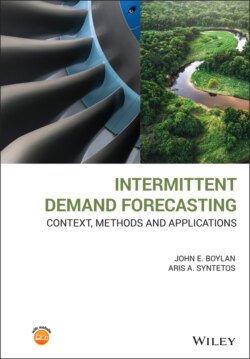Читать книгу Intermittent Demand Forecasting - John E. Boylan - Страница 69
3.3.3 Relationships Between Service Level Measures
ОглавлениеOccasions may arise when an organisation needs to change from one service level measure to another, and new service level targets are required. If service levels have not been monitored according to the new measure, then a relationship between the old and new measures can help to set new targets. Boylan and Johnston (1994) showed how relationships may be obtained between order‐line and order fill rates, and between unit and order‐line fill rates. The relationship between the unit fill rate, , and the order‐line fill rate, , is given by Eq. (3.1).
(3.1)
where is the average number of units unfilled per unfilled order line and is the reciprocal of the average number of units demanded per order line. In Table 3.1, seven units are unfilled over three order lines, giving an average of , to two decimal places. Also in Table 3.1, 25 units are demanded over five order lines, giving an average of and a reciprocal of . In this example, the product of the two ratios in Eq. (3.1) is . Applying Eq. (3.1) to an order‐line fill rate of 0.40 yields a unit fill rate of , agreeing with our original calculation.
Equation (3.1) is useful when the original calculation cannot be performed. This situation can arise when backorder (BO) records are maintained but data is not retained on the quantity filled for each order line. Boylan and Johnston (1994) described such an application at Unipart, a large UK‐based manufacturing, logistics, and consultancy company. In this case, new unit fill targets were determined, based on old order‐line fill targets. This was done separately for each of the company's major logistics clients and for each of the movement classes (fast, medium, and slow moving automotive spare parts) and led to a smooth introduction of the new measure.
